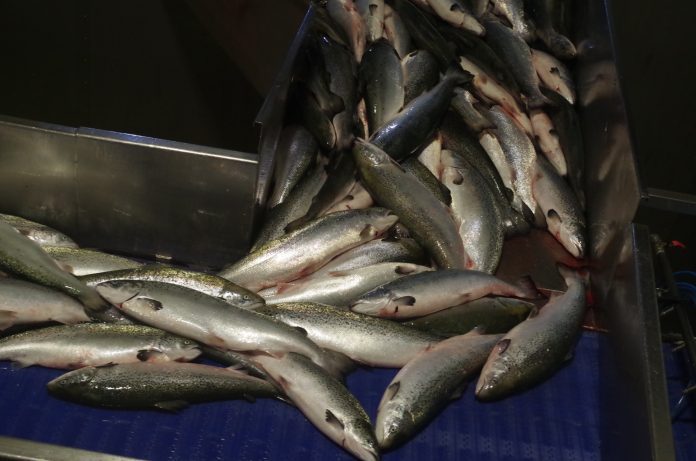Rabobank says volumes from aquaculture production will surpass those from wild-caught seafood by next year.
Detailed analysis by the Netherlands-based Rabobank entitled “World Seafood Map 2019: Value Growth in the Global Seafood Trade Continues” looks at global shape of trade in fishery products.
Growth
Seafood trade has grown by a CAGR of 4% from 2012 to 2017 to reach an estimated USD 153bn and in general, the bank observed a value growth rather than a volume growth – mainly driven by the high value of the salmon and crustacean trade.

In January, analysts Beyhan de Jong and Gorjan Nikolik summarised that the pink fish has outpaced growth in all other proteins – effectively “winning the battle of the proteins” such as pork, poultry, beef, and wild-caught seafood and that trend will continue to do so.
Norway
The World Seafood Map shows that the largest trade flow, in value terms, is still from Norway to the EU, mainly consisting of salmon and some whitefish. This is followed by trade flows of salmon and crustaceans from Canada and flows of whitefish and crustaceans from China to the US, the report wrote.
Salmon trade increased globally due to demand growth. “For example, Chile doubled its salmon exports to China in the last four years. In fact, all salmon producers, and particularly Norway, increased exports to all consumer regions. Furthermore, salmon production will continue to grow, mainly in value terms, in Europe, Canada, Australia, and Chile,” it said.

Both in volume and value terms, Norway is the second biggest exporter of seafood, folling China . Both countries have added more than USD 2bn to their seafood exports in the last five years (2012 to 2017). However, there was only a minor increase in the exported volumes.
In the upcoming years, Rabobank expects Norway (and China) to keep its positions as the main seafood exporting nations. The current African swine fever situation in China’s pork production is also leading to an increase in seafood consumption.
Aquaculture to surpass
The report also wrote that by 2020, volumes from aquaculture (crustaceans and marine species) to surpass volumes from wild-catch seafood – with production expected to exceed 90,000 metric tonnes.

“We expect future growth in seafood to continue to come from aquaculture, which will be driven by improved genetics, new husbandry technologies, innovations in aquafeed, and the switch to more efficient and intensive farming technologies,” it added.

